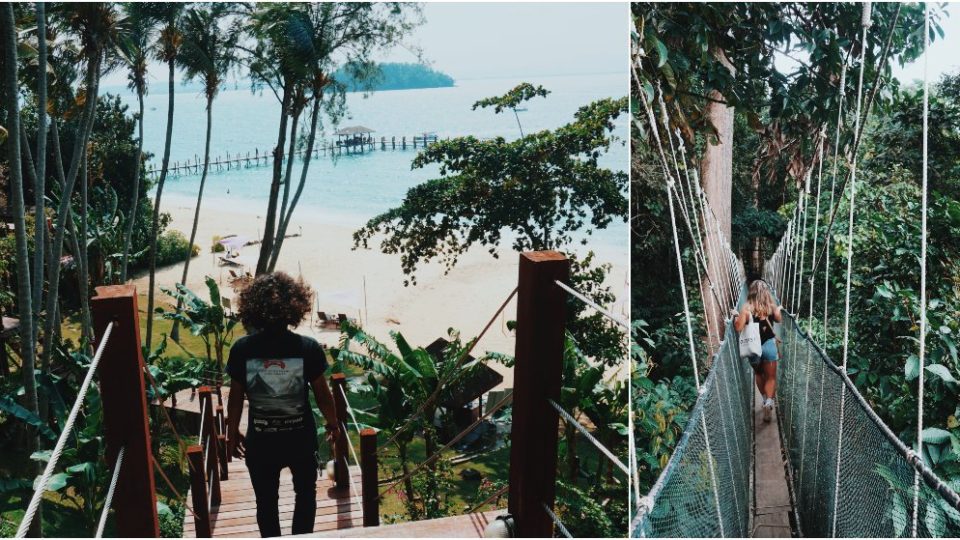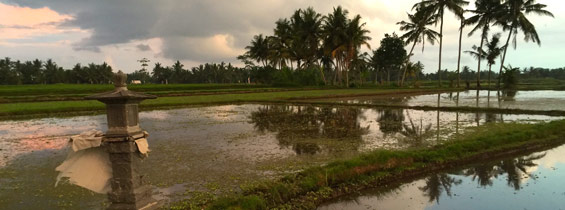Southeast Asia has no shortage of striking volcanoes to hike up, or idyllic islands with turquoise waters to splash around in, but nowhere are the two quite so accessible in one quick trip as in the Malaysian state of Sabah.
If you’re looking to plan a vacation incorporating some very chill relaxation with a dash of mountain adventure, we recommend flying into Sabah’s Kota Kinabalu, where you can easily squeeze the best of both worlds into a long weekend: mountain time at the UNESCO World Heritage Site Kinabalu Park, and beach time on the tiny Manukan Island, just off the coast of Borneo.
And while you’re at it, you can even stop at Poring Hot Springs (still in Kinabalu Park, but just past park headquarters on the other side of Ranau) for some waterfall watching, rainforest trekking, and hot tub soaking.
Sold on Sabah? If so, read on for our tips on planning your trip, what to see and do, and where to stay.
Getting in
Flying into Kota Kinabalu is a breeze. The small city — the capital of Sabah — has an international airport a short 10-minute car ride away from the city center. It being Malaysia, Grab rides are easy to order and only cost about MYR10 (US$2.44).
Multiple direct flights run daily from KL to Kota Kinabalu’s BKI on AirAsia, Malindo, and Malaysian Airlines, so you can fly budget without needing to make too many connections from wherever you are in the region.
Getting from BKI to Manukan Island is pretty straightforward. It’s about 10 minutes from the airport to the harbor, then a quick 15-minute boat ride to Manukan, if you’re staying at Manukan Island Resort and going by their speedboat. If you just want to go for the day, hop on the ferry for a 20 to 30 minute ride from Jesselton Point Ferry Terminal (service runs from 8:15am to 4:30pm, MYR23/US$5.62 round trip). All visitors to Manukan are also required to pay a MYR10 (US$2.44) conservation fee.
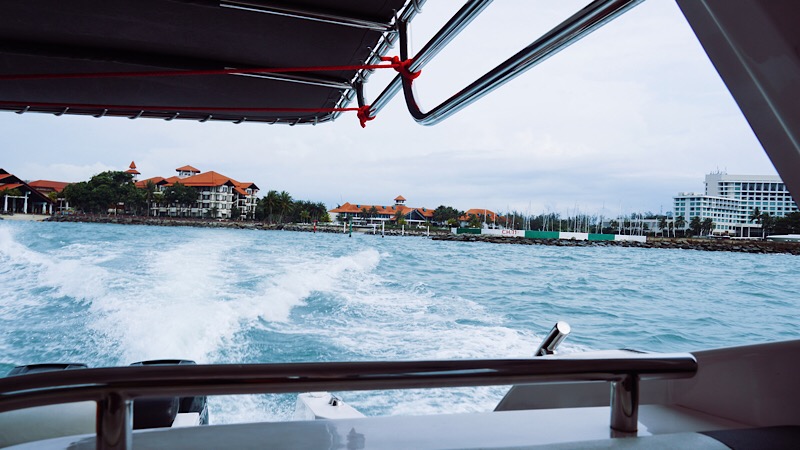
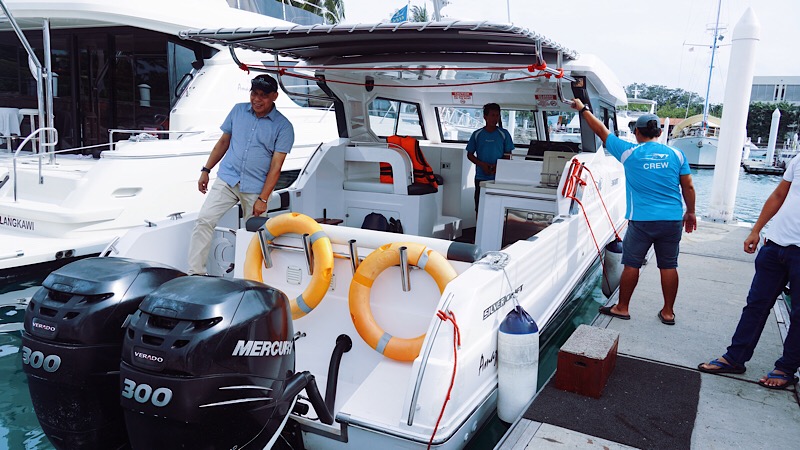
Getting over to Kinabalu Park and Poring Hot Springs is a bit more of a time investment. It’s an hour-and-40-minute car ride from BKI to Kinabalu Park, and it takes nearly three hours from BKI to Poring Hot Springs, but it’s easy enough to arrange a private driver through your accommodation. Buses and minivans are a cheaper option, but expect to spend more time on the road.
Our trip planning suggestion: break up the journey by heading straight to Poring Hot Springs for some daytime actives and lunch, then ride back to Kinabalu Park (just 40 minutes) so you can spend the night there and wake up at the park. Then, after spending some time in the mountains, head back to Kota Kinabalu and end your trip with a night or two on Manukan Island so you can unwind.
Poring Hot Springs
The hot springs are situated in a nature park complex, which gave off something of a rainforest-theme-park vibe when we visited late last year.
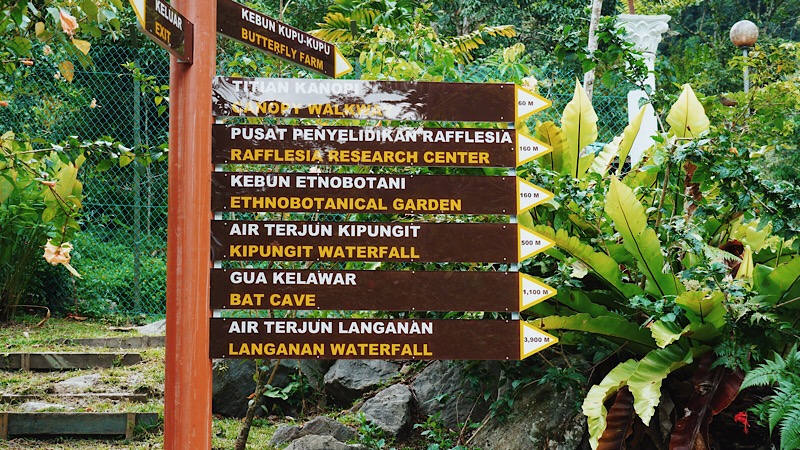
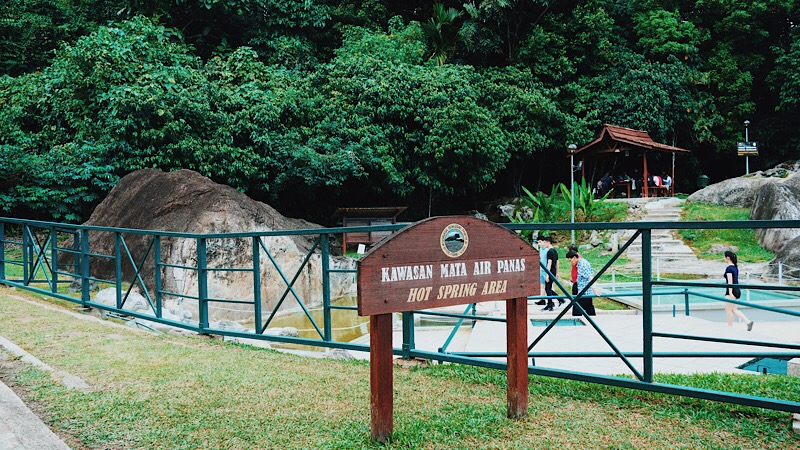
The springs themselves are thought to be therapeutic and healing, and are a popular stop for climbers on their way back from summiting Mt. Kinabalu in search of some soothing muscle relief. There are outdoor, open-air hot tubs, the use of which is complimentary with your National Park entrance fee (MYR15/US$3.66 for non-Malaysian adults, and MYR10/US$2.44 for non-Malaysian kids under 18; Malaysian nationals enjoy deeply discounted entry into the park and most of its attractions).
If you want a little more privacy, you can also rent an indoor sulphur hot tub that can accommodate two people at a time for MYR15 per hour. That said, however, the indoor tubs felt a bit run-down and claustrophobic, so we’d recommend saving your pocket change and sticking to the fresher, breezier outdoor tubs instead.
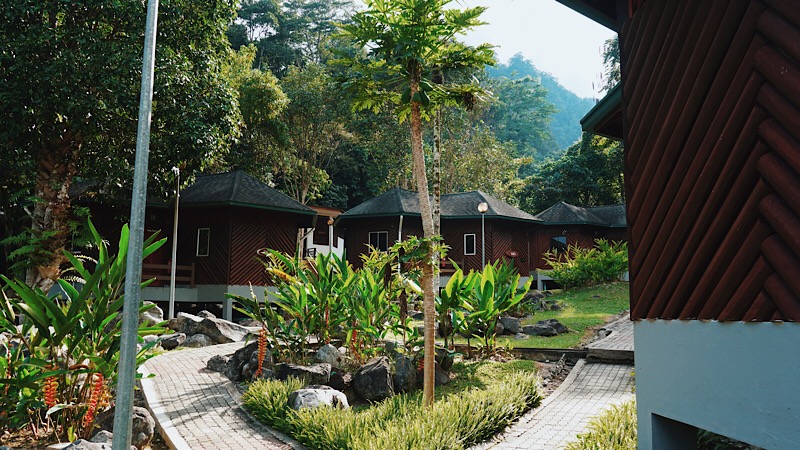

There are also two waterfalls within hiking distance of the hot spring entrance. Just a kilometer away is Kipungit Waterfall, which is 10 meters tall, takes about 15 minutes to walk to, and is more suitable for groups of all ages. Langanan Waterfall, on the other hand, is a more challenging two-hour trek across 3.4 kilometers of lowland tropical forest, but the payoff is proportional, with a waterfall 120 meters in height.
Other points of interest around the hot springs include a butterfly farm (an additional MYR4/US$1 for adults; MYR2 for kids), an orchid conservation center (an additional MYR10/US$2.44 for adults; MYR5 for kids), and a bat cave, which is about a 30-minute walk from the main entrance (and conveniently on the way to Langanan Waterfall).
The canopy walkway (an additional MYR5/US$1.22 for adults; MYR2.50 for kids) is just a 10-minute walk from the entrance, and allows visitors to stroll through over 100 meters of forest canopy on a well-maintained rope bridge (no rickety Indiana Jones-esque vibes here) more than 30 meters above the ground. If heights don’t bother you, give it a try — the view is breathtaking.
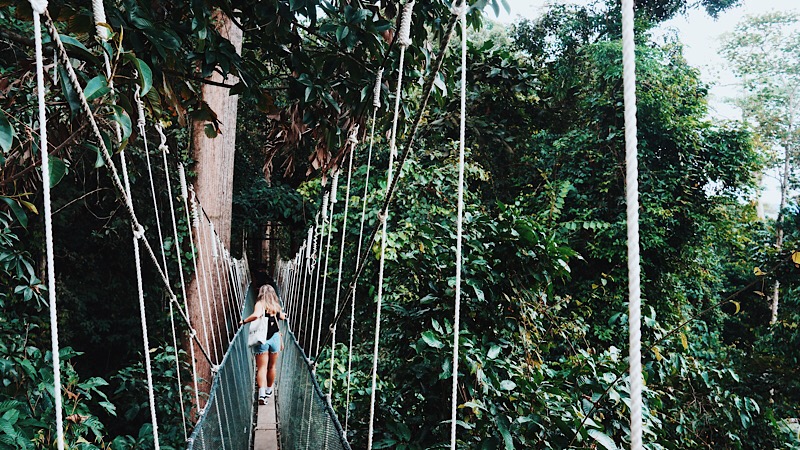
Another cool thing worth checking out — if your timing is fortuitous — is the world’s largest flower, the rafflesia. A 22-minute drive from Poring Hot Springs is the Kokob Rafflesia Conservation Garden — a formal sounding name for what’s actually a local family with a viewing platform on their property that allows guests to observe the endangered flower when it’s in bloom (usually only for a week, and not at any particular time of year).
Fun fact: not only is does the species claim the title of largest flower ever recorded at some 1.2 meters wide, it’s also nicknamed the “corpse flower” thanks to the fetid stench of its blooms! But don’t let that put you off; when we visited we were too far away to get a whiff. We paid MYR50 (US$12) per person for access to the garden.

We spent just an afternoon at Poring Hot Springs, which was just enough time for lunch, the canopy walk, a dip in the springs, and a stop in Kokob. However, if you want to hit all the attractions, there’s a handful of accommodation options in the area, including an outpost of the Malaysian chain Sutera Sanctuary Lodges right in the park offering a range of room types, including a twin share room for MYR360 (US$88) at the cheapest, a jungle lodge for MYR1,200 (US$293), a river lodge for MYR1,800 (US$440), and villas for MYR2,400 (US$586).
Kinabalu Park
Contrary to popular belief, you don’t actually have to climb Mount Kinabalu to enjoy Kinabalu Park. Of course, making it to the peak of the 4,095-meter mountain is what the park is most famous for, and it’s definitely an incredible experience — especially if you can summit for sunrise — but there are still plenty of trails to trek through other than the main mountain.
Jungle trekking options include the longer Ligawu Trail (5,620 meters), and the bite-sized Bukit Tupai Trail (a mere 345 meters). There’s also a Botanical Garden full of diverse flora, and Nabalu Market, which sells things like local produce and handicrafts.
Kundasang Town, near the park’s headquarters, has a historical War Memorial Park that commemorates the Sandakan Death Marches, which were responsible for the deaths of thousands of Allied prisoners of war during World War II. You can also visit the 199-hectare Desa Cattle Farm if you’re after some fresh dairy — or just feel like hanging with some cute calves.
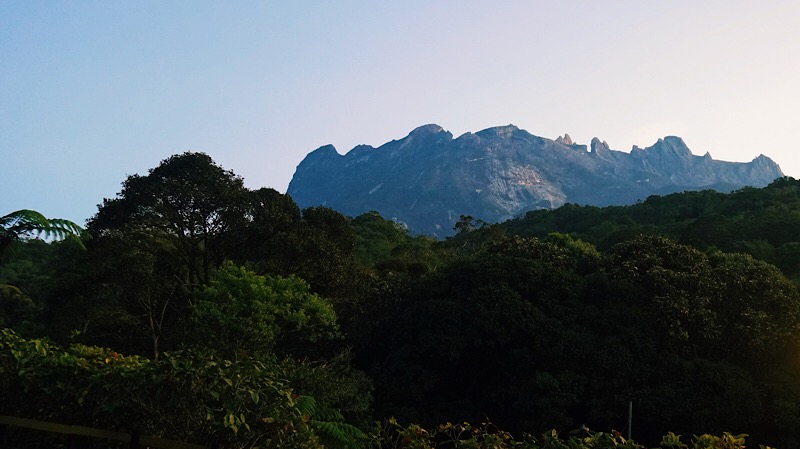
If you want to stay near the base of the mountain, Sutera Sanctuary runs all the properties within the national park, so rates tend to run steeper, but you can stay outside of the park in Kundasang without breaking the bank.
We spent the night in the HQ area of Kinabalu Park at Sutera Sanctuary’s recently renovated Nepenthes Suite (MYR1,400/US$342 a night), whose wood furnishings, hill-side construction, and fireplace almost felt like a rustic Swiss lodge plopped incongruously in the middle of the jungle. It was a cool fusion of ski cabin vibes with a chic tropical aesthetic.
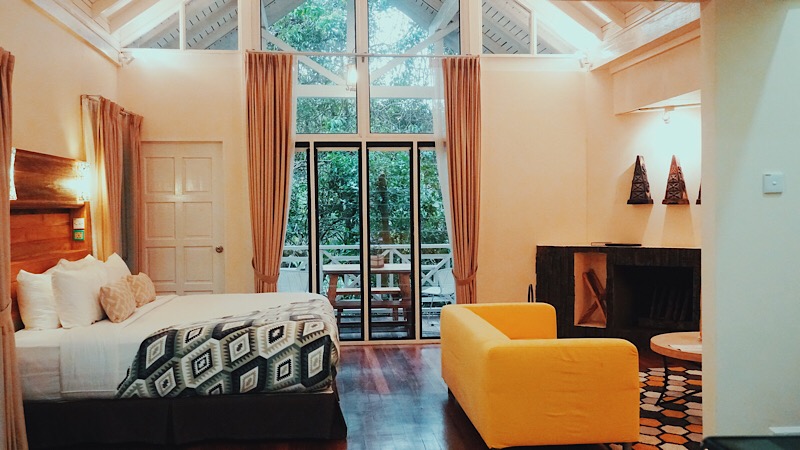
Just to warn you: while you’re still very much in the tropics, prepare yourself for much cooler temperatures than sea-level Kota Kinabalu (about 10 celsius this time of year), so pack a sweater — or something heavier if you plan to head all the way to the peak.
As with Poring, Sutera Sanctuary has a range of accommodation options, including a hill lodge for MYR1,140 a night (US$278), a peak lodge for MYR2,400 (US$586), a summit lodge for MYR4,800 (US$1,173), and, for those looking to really splurge, the Rajah Lodge, which sleeps six and goes for a cool MYR14,400 (US$3,517) a night.
For those serious about climbing, Sutera Sanctuary does a Kinabalu Park three-day, two-night climbing package with a dorm option for MYR1,599 (US$391 for foreigners; less for Malaysian nationals), a private room option that can accommodate two for MYR3,727 (US$910), and a six-person private room option for MYR11,181 (US$2,731).
With the package, climbers spend the first night at one of the lodges at the base and the second night at Laban Rata Resthouse — Panalaban, at an elevation of 3,350 meters. If you’re keen to bundle the climbing with a trip to the hot springs, Sutera also does a three-day, two-night package with the first night at their dorm in the hot springs and the second night at Laban Rata Resthouse for MYR1,440 (US$352), with the option to upgrade rooms for a fee.
Manukan Island
The beautiful 51-acre Manukan Island, the second largest of the five Tunku Abdul Rahman Islands, is a great stop for beach-lovers looking for an effortless island-hop off of Kota Kinabalu.
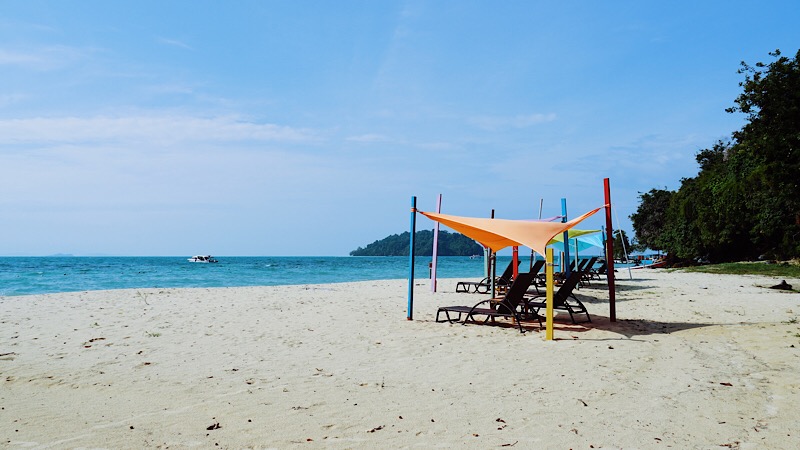

It can get quite busy during the daytime — the convenient access is a a double-edged sword — as visitors arrive by the boatload to lounge on the beach, swim, and snorkel. However, come 5pm, when the last boat leaves and the day-trippers gather for a mass exodus, things thankfully get a lot more tranquil, with overnight guests enjoying the run of the place. (As the island is located inside the national park, the only place to stay is Manukan Island Resort, also managed by Sutera.)
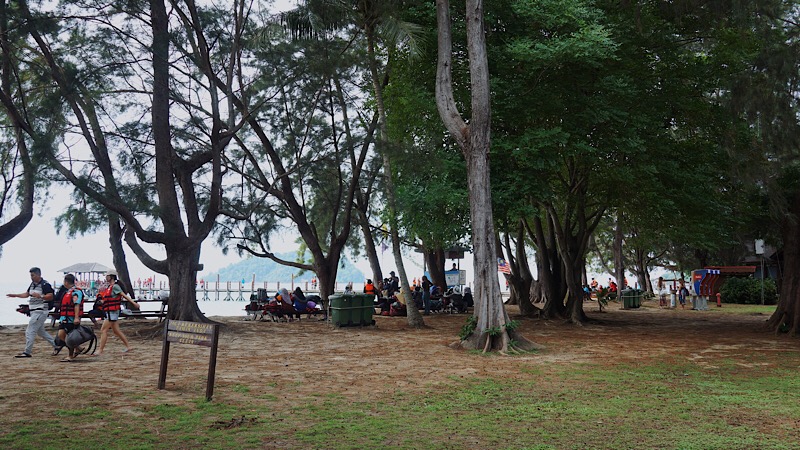
Manukan’s white sands, clear waters, and rugged jungle impressed us immediately. There’s a short 1,500-meter trek guests can do along the edge of the jungle to a sunset point for what we’ve been assured is an epic view (conditions permitting), as well as a separate jungle trail that cuts through the forest so you can make a full circle around the island. Unfortunately, the weather wasn’t great when we visited, so the trails were slippery and there wasn’t much of a sunset to speak of.
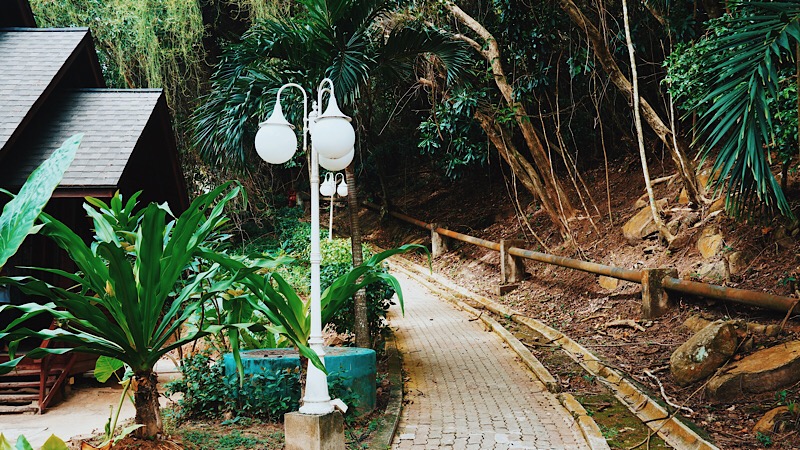
Other activities around Manukan include snorkeling the island’s protected reef (you can rent a snorkel for just MYR14/US$3.42), as well as your other typical aquatic activities like diving, sea walking, and parasailing.
Based on our trip, we’d advise timing your visit either just before the rainy season (typically October to February) or just after, that way you can theoretically enjoy the perks of high-season weather — and the outdoor activities that entails — while dodging the high-season crowds.
As our trip was in early November, we got hit with pretty bad weather, which meant murky snorkeling conditions and lots of rain (but chilling on the beach when it was dry and hanging out at the room were nonetheless extremely relaxing).


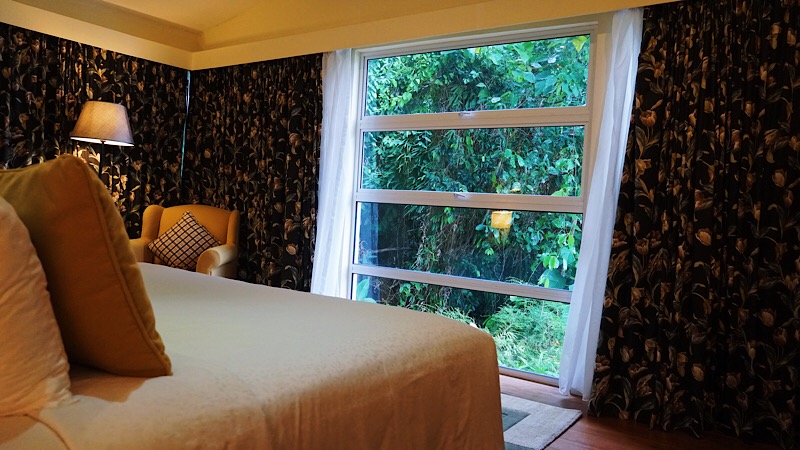

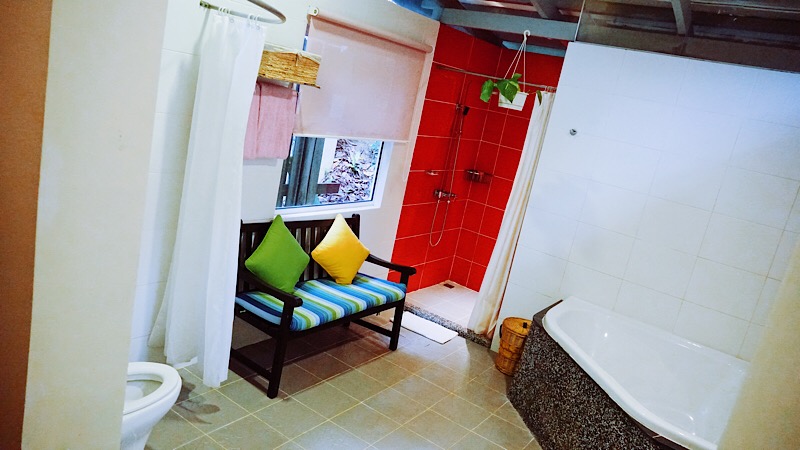
Sutera Sanctuary has two main accommodation types on Manukan: hillside villas and and beach suites. While the hillside villas (MYR1,968/US$480.64) are more expensive than the beach alternative (MYR1,308/US$319.45), if you have the cash, we recommend splurging for the hillside for the setting alone.
The hillside villas are to the west of the island’s jetty and have a quieter, more secluded feeling. While all the beaches on the island are technically public, the loungers in front of the hillside villas are managed by the accommodation, which translates to fewer people. The beach-side rooms are to the east of the jetty are much busier, since that’s where most people coming in for the day end up — it’s where the island’s one restaurant, Perahu is located, along with the island’s one food stall, convenience shop, and water equipment rental store, so expect a lot more foot traffic.
Editor’s Note: Our editor traveled to Kota Kinabalu as part of a press trip organized by Sutera Sanctuary Lodges, which provided flights, meals, and accommodation. However, Sutera had no editorial involvement or oversight in this article. Read our Editorial Policies here.
